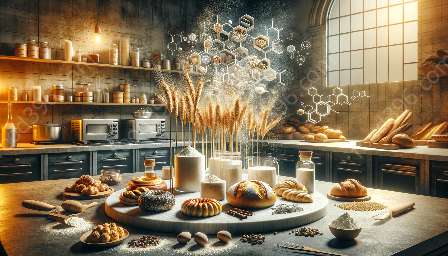When it comes to baking, fats and oils play a crucial role in creating the desired texture, flavor, and structure of baked goods. In this comprehensive guide, we will delve into the world of fats and oils, including butter, margarine, and shortening, and explore their compatibility with flour and other baking ingredients, as well as the science and technology behind successful baking.
The Basics of Fats and Oils
Fats and oils are essential components of baking. They provide moisture, tenderness, and flavor to baked goods, and they also affect the texture and structure of the final products. Understanding the differences between butter, margarine, and shortening is key to achieving the desired results in baking.
Butter
Butter is a natural dairy product made from churning cream or milk. It is known for its rich flavor and ability to create a tender crumb in baked goods. Additionally, butter contains milk solids, which contribute to browning and flavor development in baked goods. However, its relatively low melting point can make it challenging to work with in certain recipes.
Margarine
Margarine is a processed spread made from vegetable oils. It is often used as a butter substitute due to its lower cost and longer shelf life. Margarine comes in various forms, including stick and tub, and it can be found in both regular and light versions. When using margarine in baking, it is important to consider the water content and adjust the recipe as needed.
Shortening
Shortening is a solid fat made from vegetable oils, such as soybean or palm oil. It is commonly used in baking to create tender, flaky textures in pie crusts, cookies, and other pastries. Unlike butter, shortening has a higher melting point, which makes it suitable for certain baking applications where a more stable fat is desired.
Interactions with Flour and Other Baking Ingredients
When combining fats and oils with flour and other baking ingredients, it's important to understand how they interact to achieve the desired outcomes. For instance, fats coat the flour particles, effectively reducing gluten formation, which leads to tender baked goods. Additionally, the type of fat used can affect the texture, flavor, and overall performance of a recipe.
Flour
Flour is the backbone of baking, providing structure and texture to a wide range of baked goods. When mixed with fats and oils, flour absorbs the fat, creating a tender and crumbly texture in the finished products. Understanding the different types of flour and their protein content is essential for selecting the right flour to pair with specific fats and oils.
Baking Ingredients
In addition to flour, various baking ingredients such as sugar, leavening agents (baking powder and baking soda), eggs, and liquids play pivotal roles in interacting with fats and oils. These ingredients influence the flavor, texture, and overall quality of the final baked goods, and understanding their interactions with fats and oils is vital for successful baking.
Baking Science & Technology
The science and technology behind baking involve complex chemical and physical processes that occur during mixing, shaping, proofing, and baking. Understanding the impact of fats and oils on these processes is essential for achieving consistent and desirable results in baking.
Emulsification and Aeration
Fats and oils play a role in emulsification, which is the process of creating stable mixtures of liquids that are normally unmixable, such as oil and water. Emulsifiers found in fats and oils help to create smooth batters and doughs that result in tender and moist baked goods. Additionally, during the creaming process, fats and oils can trap air, leading to aeration and the development of light and fluffy textures in cakes and batters.
Temperature Control
The temperature at which fats and oils are used in baking can greatly impact the final products. For instance, understanding the melting points of different fats is crucial for achieving the desired texture in baked goods. Adjusting the temperature during mixing and baking can also influence the emulsification process, as well as the release of flavorful compounds from fats and oils.
In Conclusion
Fats and oils are integral components of successful baking, and understanding their properties, interactions with flour and other baking ingredients, and the science and technology behind their usage is essential for creating high-quality baked goods. By mastering the art of working with fats and oils, bakers can unlock a world of possibilities in creating delectable and irresistible treats.

